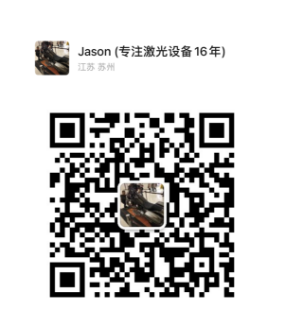Development direction of laser marking technology
The latest laser marking technology is developing in a more efficient, precise and environmentally friendly direction, mainly including the following aspects:
1. High power laser source
The application of a new generation of high-power laser sources (such as fiber lasers and solid-state lasers) not only increases the marking speed, but also improves material processing capabilities. This laser source can process thicker or harder materials in less time, reducing overall production cycle time.
2. Intelligence and automation
With the development of artificial intelligence and Internet of Things technology, laser marking equipment is gradually transforming into intelligence and automation. Combining advanced industrial robots, machine vision and data analysis technology, the automated marking system can monitor and adjust marking parameters in real time, significantly improving efficiency and product consistency.
3. Multifunctional integration
Future laser marking systems will integrate multiple functions, such as marking, engraving, cutting and cleaning. Users can flexibly configure the system according to needs, which not only improves equipment utilization, but also reduces equipment switching time in the workflow. .
4. Green environmental protection technology
Emerging laser marking technology is paying attention to environmental protection, using low energy consumption and chemical-free materials to reduce the impact on the environment. At the same time, these new technologies produce less waste, further reducing production costs.
Methods to improve marking efficiency and quality
1. Optimize marking parameters
By adjusting parameters such as laser power, frequency, and scanning speed, the clarity and surface quality of marking can be improved. In actual operation, the use of machine learning algorithms for data analysis can achieve automatic adjustment of optimal marking conditions.
2. Use high-quality lasers
Using high-performance lasers (such as high-frequency fiber lasers) can increase speed while ensuring marking accuracy, thereby effectively improving production efficiency.
3. Improve material compatibility
Based on the characteristics of different materials, we develop targeted laser marking technology and equipment to achieve high-quality marking effects on different materials.
4. Strengthen equipment maintenance and management
Regularly maintain your laser marking equipment to ensure optimal performance and avoid production delays caused by equipment failure. At the same time, improve the training on the use of equipment so that operators can master the operation of the equipment, thereby improving the overall production efficiency.
Market opportunities and challenges brought by new technologies
Market opportunities:
The demand for personalized customization is growing. As consumers' demand for personalized products increases, the flexibility and customization capabilities of laser marking technology can meet this trend and open up new market opportunities for enterprises.
Expanding application fields Laser marking technology is not limited to traditional manufacturing, but also extends to many industries such as medical, electronics, automobiles, and aviation, bringing new business opportunities to related companies.
Promoted by environmental regulations More and more regulations require companies to adopt environmentally friendly processes. Laser marking technology will be favored in the market due to its low energy consumption and non-pollution characteristics.
challenge:
Investment pressure brought by technological updates When companies adopt new technologies, they need to invest a lot of money in research and development and equipment purchases, which may put pressure on small and medium-sized enterprises.
Market competition intensifies. With the popularization of laser marking technology, there are more competitors, which may lead to price wars and a reduction in market share, requiring companies to continue to innovate to maintain competitive advantages.
Shortage of technical personnel The rapid development of new technologies requires talents with corresponding skills, and there is a relative shortage of qualified technical personnel in the current market, which may restrict the further development of enterprises.
The development direction of the latest laser marking technology not only opens up new market opportunities for enterprises, but also brings corresponding challenges. Effective methods to improve marking efficiency and quality will provide enterprises with sustained competitiveness in a fiercely competitive market environment. Enterprises need to flexibly respond to market changes and technological challenges while seizing opportunities.























